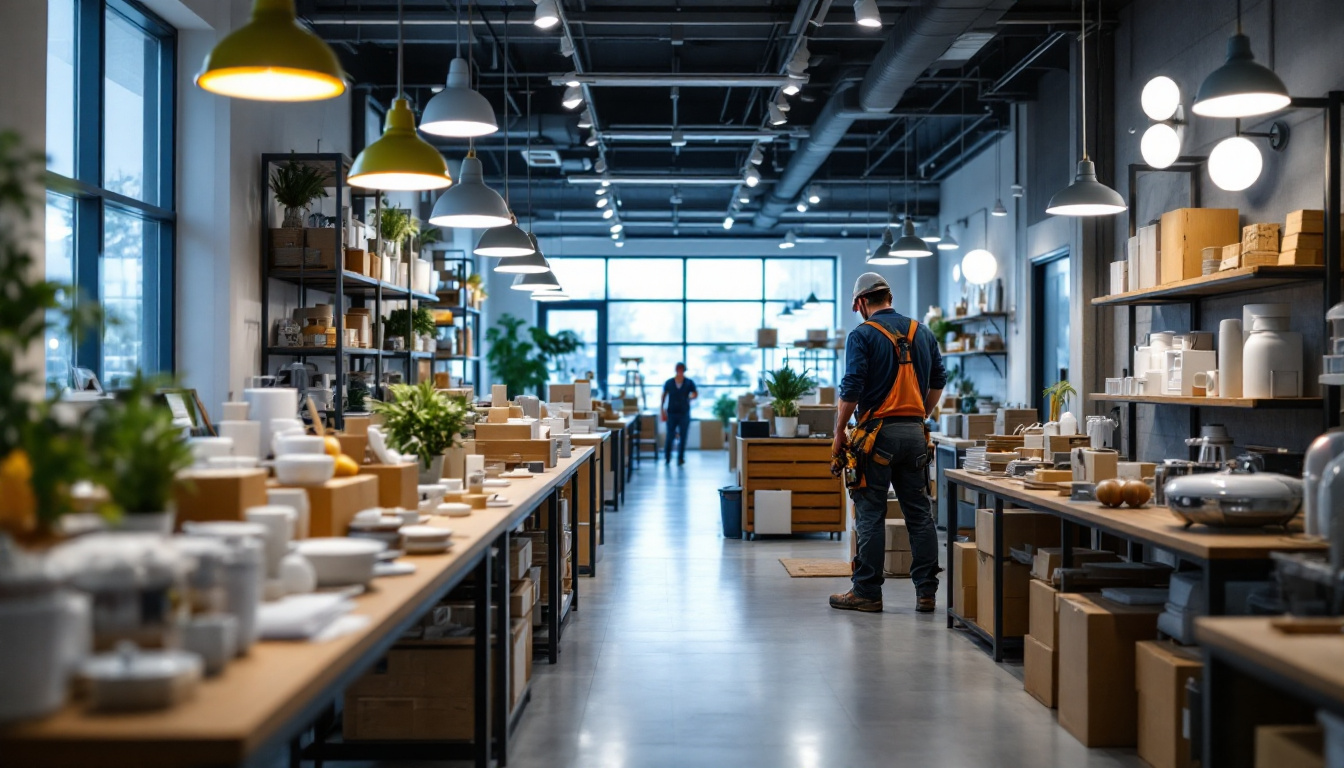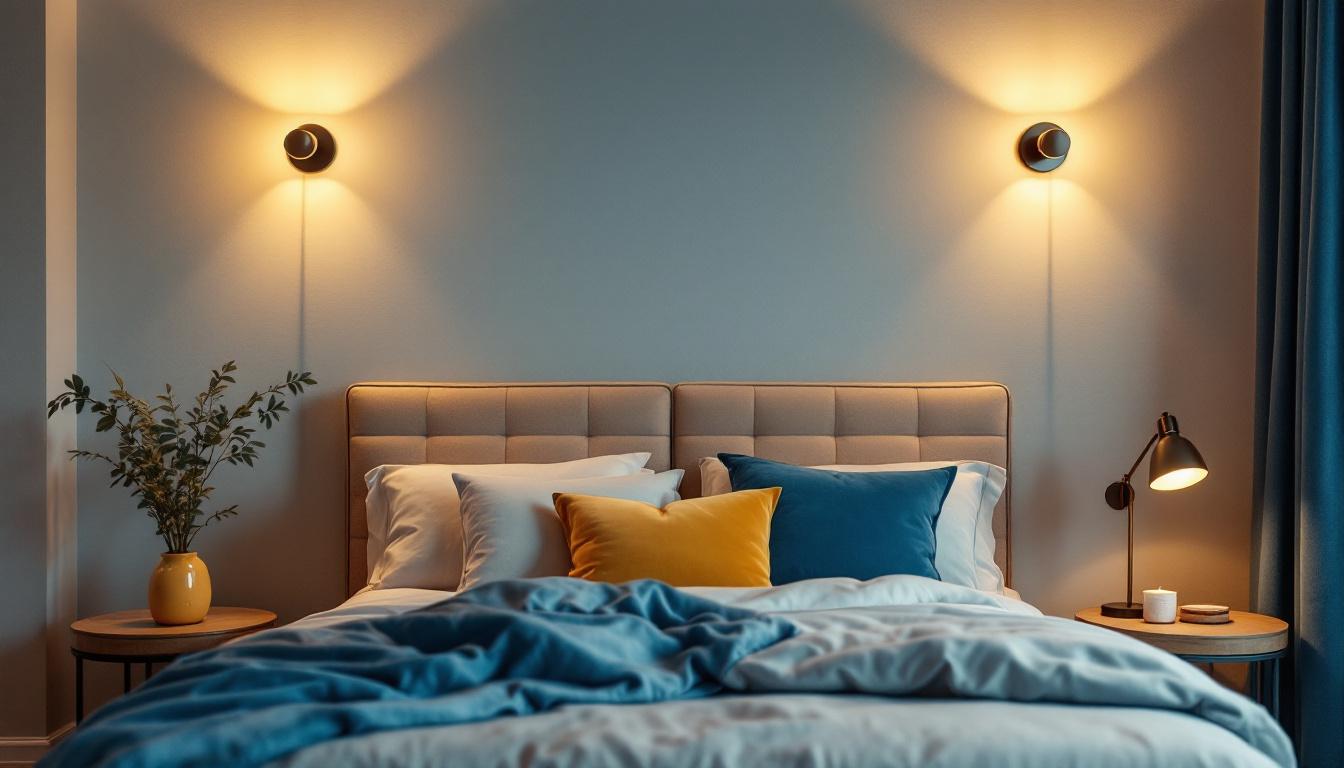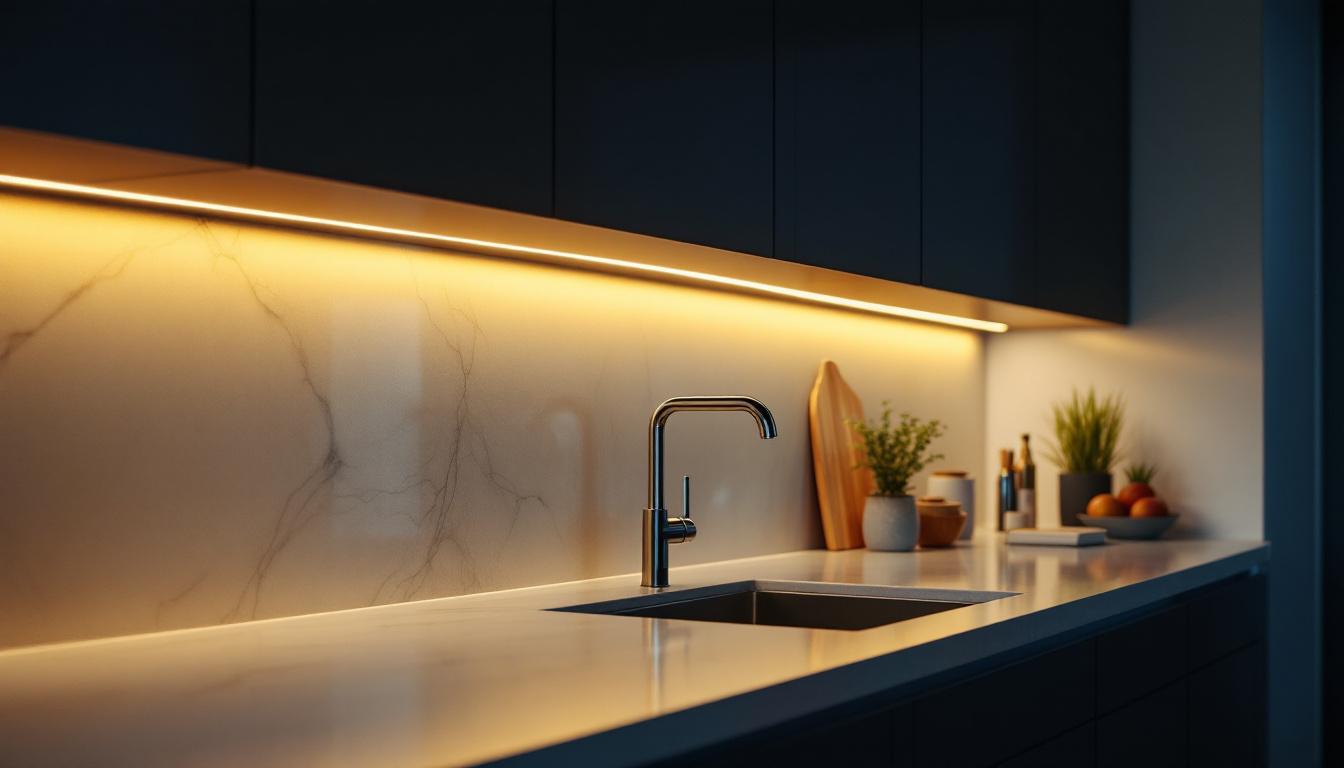
In the retail environment, lighting plays a crucial role in creating an inviting atmosphere, enhancing product visibility, and influencing customer behavior. As energy efficiency becomes increasingly important, many retailers are turning to lighting retrofits as a viable solution. For lighting contractors, understanding the nuances of these retrofits is essential for successful project execution. This article presents a comprehensive checklist to guide lighting contractors through the process of store lighting retrofits.
Before diving into the checklist, it’s essential to grasp the foundational concepts of lighting retrofits. A retrofit involves replacing outdated lighting systems with more efficient alternatives, often incorporating advanced technologies such as LED lighting. This not only reduces energy consumption but also enhances the overall aesthetic appeal of a store. Moreover, the transition to modern lighting solutions can significantly improve visibility and color rendering, allowing products to be showcased in their best light, which is crucial in retail environments.
Furthermore, lighting retrofits can also contribute to sustainability efforts. By opting for energy-efficient lighting, businesses can reduce their carbon footprint, aligning with the growing consumer demand for environmentally responsible practices. This shift not only benefits the planet but can also enhance a brand’s image, attracting eco-conscious customers who prioritize sustainability in their purchasing decisions.
Lighting retrofits offer numerous advantages for both retailers and contractors. Firstly, they significantly lower energy costs, which can lead to substantial savings over time. Secondly, modern lighting solutions often have longer lifespans, reducing maintenance needs and associated costs. Lastly, improved lighting quality can enhance the shopping experience, potentially increasing sales. Additionally, many new lighting systems come equipped with smart technology that allows for automated controls, such as dimming and scheduling, further optimizing energy use and adapting to the store’s operational needs.
Another noteworthy benefit is the potential for increased employee productivity. Well-lit environments can reduce eye strain and fatigue, creating a more comfortable workspace for staff. This can lead to improved morale and efficiency, which is particularly important in high-traffic retail settings where quick service is essential. Enhanced lighting can also highlight promotional displays and seasonal products, drawing customers’ attention and encouraging impulse purchases.
When planning a retrofit, several factors must be taken into account. The existing lighting layout, the types of products displayed, and the store’s overall design all influence the choice of new lighting solutions. Additionally, understanding local regulations and incentives related to energy efficiency can provide financial benefits for both contractors and their clients. It’s also crucial to consider the color temperature of the lighting; warmer tones may create a cozy atmosphere, while cooler tones can evoke a sense of cleanliness and modernity, depending on the brand’s identity and target demographic.
Moreover, the installation process itself requires careful planning. Contractors should evaluate the existing electrical infrastructure to ensure compatibility with new technologies and assess any potential upgrades needed. Engaging with lighting designers or consultants can also be beneficial, as they can provide insights into the latest trends and innovations in lighting design, ensuring that the retrofit not only meets functional needs but also aligns with the aesthetic vision of the retail space.
A thorough assessment is critical before any retrofit project begins. This stage involves evaluating the current lighting system and identifying areas for improvement. A comprehensive assessment helps ensure that the retrofit meets both aesthetic and functional requirements. Additionally, it sets the foundation for a successful project by aligning the goals of the retrofit with the specific needs of the space, whether it be enhancing ambiance, improving visibility, or increasing energy efficiency.
A lighting audit is an essential step in the pre-retrofit assessment. This process involves measuring existing light levels, identifying types of fixtures in use, and evaluating their performance. By gathering this data, contractors can make informed decisions about which fixtures to replace and what new technologies to implement. Furthermore, the audit should also consider the distribution of light within the space, as uneven lighting can lead to discomfort and reduced productivity. Engaging with occupants during this phase can provide valuable insights into their lighting preferences and needs, ensuring that the final design is both functional and pleasing.
Understanding the current energy consumption of the lighting system is crucial. Contractors should analyze utility bills and energy usage patterns to establish a baseline. This analysis will help in projecting potential savings from the retrofit and may also be necessary for qualifying for energy efficiency incentives. Moreover, it is beneficial to utilize energy modeling software during this phase, as it can simulate different lighting scenarios and provide a clearer picture of how proposed changes will impact overall energy consumption. By comparing the projected energy savings against the costs of the retrofit, stakeholders can make more informed decisions about the feasibility and return on investment of the project.
Once the assessment is complete, the next step is to develop a detailed retrofit plan. This plan should outline the scope of work, budget considerations, and a timeline for implementation. A well-structured plan ensures that all parties involved have clear expectations and responsibilities. Additionally, it should incorporate a risk management strategy to address potential challenges that may arise during the retrofit process. This proactive approach can help mitigate delays and keep the project on track, ensuring that the final outcome aligns with the initial vision.
Selecting appropriate lighting solutions is one of the most critical aspects of the retrofit plan. Factors such as color temperature, lumen output, and fixture design should be carefully considered. For instance, warm white light may be more suitable for clothing stores, while cooler temperatures might be ideal for electronics retailers. Furthermore, energy efficiency should be a priority; opting for LED fixtures can significantly reduce energy consumption while providing excellent illumination. Incorporating smart lighting controls, such as dimmers and sensors, can also enhance the functionality of the lighting system, allowing for adjustments based on occupancy and natural light levels.
Budgeting is a vital part of the planning process. Contractors should provide clients with a detailed breakdown of costs, including materials, labor, and any potential additional expenses. It’s also wise to discuss financing options or available incentives that may offset the initial investment. Beyond the upfront costs, it’s important to consider long-term savings associated with energy-efficient upgrades. For example, while the initial expenditure on high-quality fixtures may be higher, the reduction in energy bills and maintenance costs over time can result in substantial savings. Additionally, clients should be informed about potential tax credits or rebates that can further alleviate the financial burden of the retrofit project.
The implementation phase is where the planned retrofit comes to life. This stage requires careful coordination to ensure that the project is completed efficiently and with minimal disruption to store operations.
Scheduling is crucial to minimize the impact on store operations. Contractors should work closely with store management to determine the best times for installation, often opting for off-peak hours or overnight work. Clear communication during this phase helps maintain a smooth workflow.
During installation, adhering to best practices is essential for ensuring safety and quality. Contractors should follow manufacturer guidelines for fixture installation and ensure that all electrical work is performed according to local codes. Proper training for installation teams can enhance efficiency and reduce the likelihood of errors.
After the installation is complete, a post-retrofit evaluation is necessary to assess the effectiveness of the new lighting system. This evaluation helps identify any issues that may need addressing and provides valuable insights for future projects.
Measuring the performance of the new lighting system involves comparing energy consumption and light levels to the pre-retrofit data. This analysis not only confirms the success of the retrofit but also helps in demonstrating the value of the project to the client.
Client feedback is an invaluable component of the post-retrofit evaluation. Contractors should engage with store management to gather insights on how the new lighting has impacted the shopping experience. Positive feedback can serve as a powerful marketing tool for future projects.
After a successful retrofit, ongoing maintenance and support are essential for ensuring the longevity of the new lighting system. Contractors should provide clients with clear guidelines on maintenance practices and offer support services as needed.
Establishing a regular maintenance schedule can help prevent potential issues and prolong the lifespan of the lighting fixtures. This schedule should include routine inspections, cleaning of fixtures, and timely replacements of any faulty components.
Training store staff on the new lighting system can enhance its effectiveness. Staff should be informed about the features of the new fixtures and how to report any issues. This proactive approach fosters a collaborative relationship between the contractor and the retailer.
As technology continues to evolve, lighting contractors have access to innovative tools that can enhance the retrofit process. Embracing these technologies can lead to more efficient installations and improved client satisfaction.
smart lighting solutions, such as automated controls and sensors, can significantly enhance the functionality of a retail space. These systems allow for dynamic adjustments based on occupancy and natural light levels, optimizing energy use while maintaining an appealing atmosphere.
Design software can aid contractors in visualizing the new lighting layout before installation. By creating simulations, contractors can present clients with a clear picture of how the new lighting will enhance the store’s ambiance, helping to secure buy-in for the project.
Store lighting retrofits represent a valuable opportunity for lighting contractors to provide significant benefits to their retail clients. By following this comprehensive checklist, contractors can navigate the complexities of retrofits with confidence. From the initial assessment to post-installation support, each step plays a critical role in ensuring the success of the project. As the retail landscape continues to evolve, staying informed about the latest technologies and best practices will empower contractors to deliver exceptional results, ultimately enhancing the shopping experience for customers.
Ready to elevate your store lighting retrofit projects with superior, spec-grade lighting products? Look no further than LumenWholesale. We provide contractors with the highest quality lighting solutions at unbeatable wholesale prices. By eliminating the middleman, we ensure you get the best value without inflated markups. Our extensive selection not only meets but exceeds industry standards, guaranteeing reliable and high-performance lighting for every project. Plus, with free shipping on bulk orders, you can enjoy premium lighting at the best price, without any hidden fees or compromises. Enhance your retail environments and impress your clients by choosing Wholesale Lighting at the Best Value with LumenWholesale.

Discover how portable lighting solutions are revolutionizing the work of lighting contractors.

Discover the essential insights lighting contractors need to know about black gooseneck outdoor lights.

Discover essential tips on over bed wall lights for lighting contractors.

Discover how under cabinet wire technology is revolutionizing lighting design and installation.